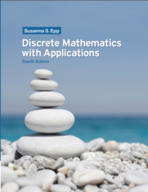n economics the behavior of an economy from one period to another is often modeled by
Chapter 5, Problem 54(choose chapter or problem)
In economics the behavior of an economy from one period to another is often modeled by recurrence relations. Let \(Y_{k}\) be the income in period k and \(C_{k}\) be the consumption in period k. In one economic model, income in any period is assumed to be the sum of consumption in that period plus investment and government expenditures (which are assumed to be constant from period to period), and consumption in each period is assumed to be a linear function of the income of the preceding period. That is,
\(Y_{k} = C_{k} + E\)
where E is the sum of investment plus government expenditures where c and m are constants.
\(C_{k} = c + mY_{k−1}\)
Substituting the second equation into the first gives \(Y_{k} = E + c + mY_{k−1}\).
a. Use iteration on the above recurrence relation to obtain
\(Y_{n}=(E+c)\left(\frac{m^{n}-1}{m-1}\right)+m^{n} Y_{0}\)
for all integers n≥1.
b. (For students who have studied calculus) Show that if
\(0<m<1 \text {, then } \lim _{n \rightarrow \infty} Y_{n}=\frac{E+c}{1-m}\).
Text Transcription:
Y_k
C_k
Y_k = C_k + E
C_k = c + mY_k−1
Y_k = E + c + mY_k−1
Y_n = (E + c) ( m^n -1 / m - 1) + m^nY_0
0 < m < 1, then lim n→∞ Y_n = E + C / 1 - m
Unfortunately, we don't have that question answered yet. But you can get it answered in just 5 hours by Logging in or Becoming a subscriber.
Becoming a subscriber
Or look for another answer
